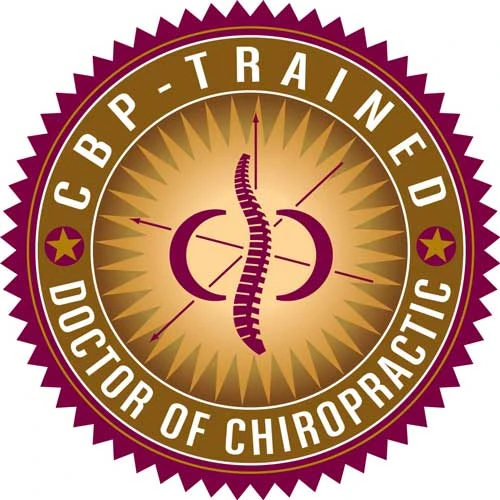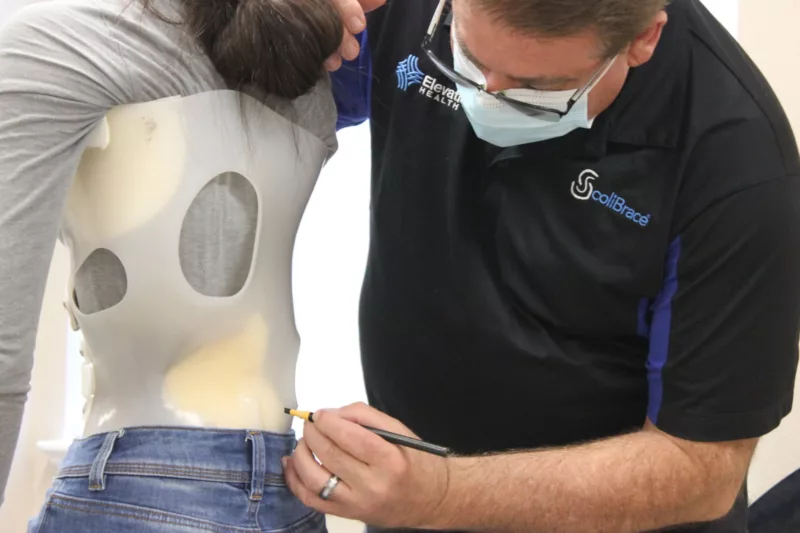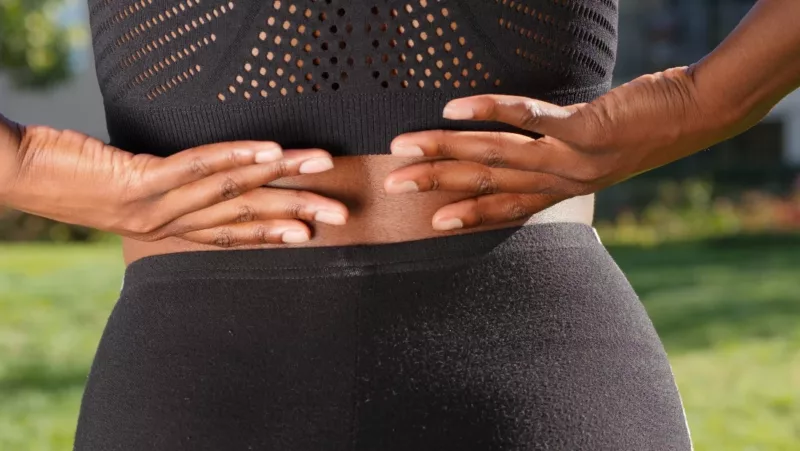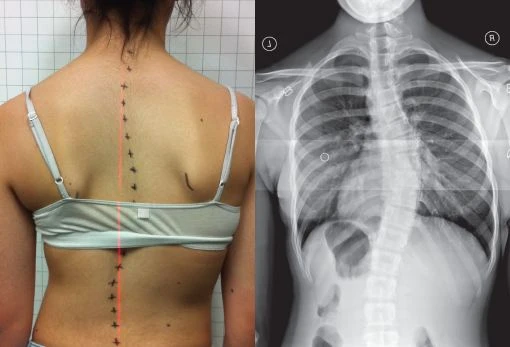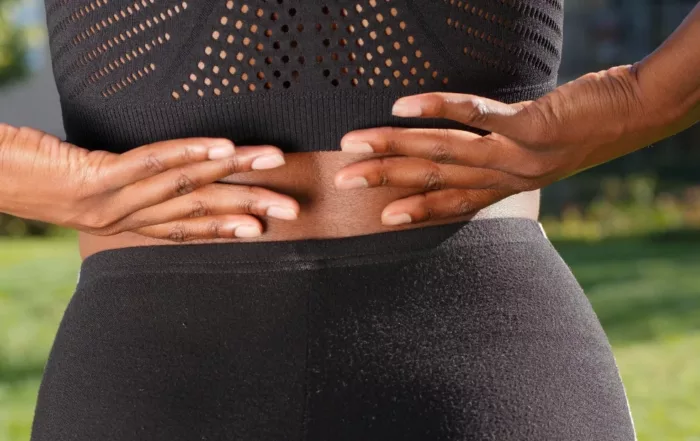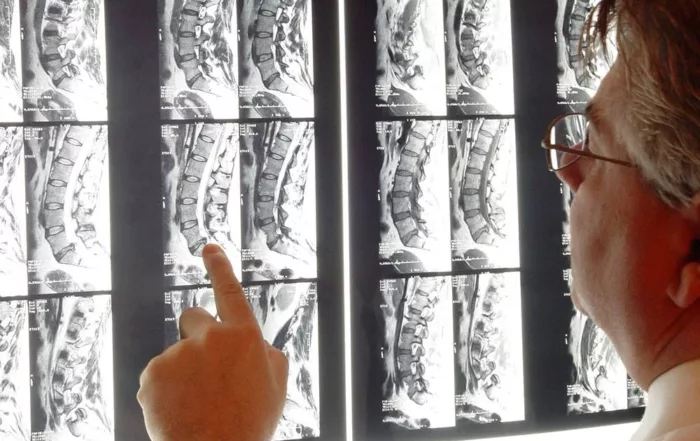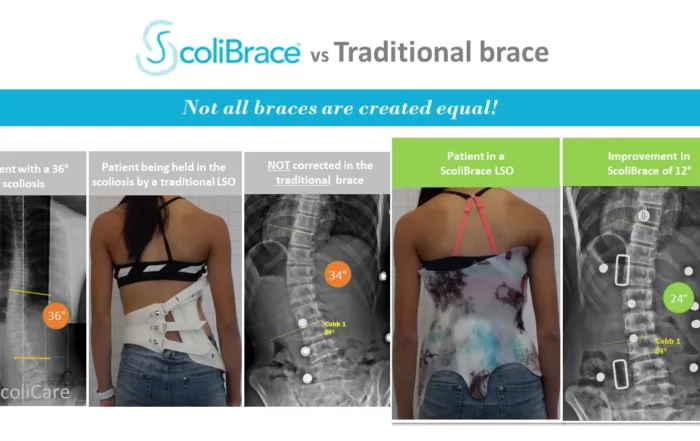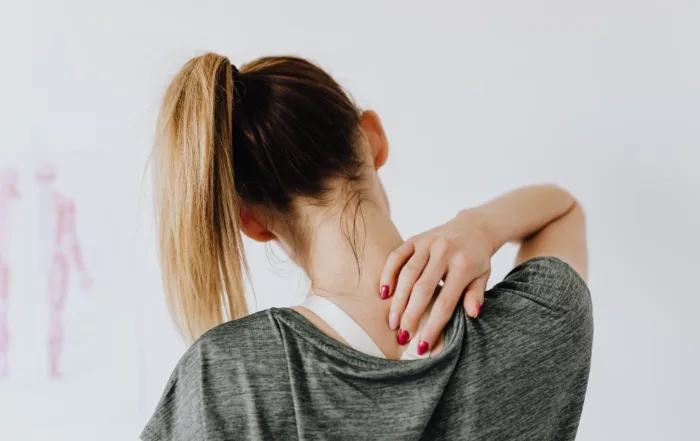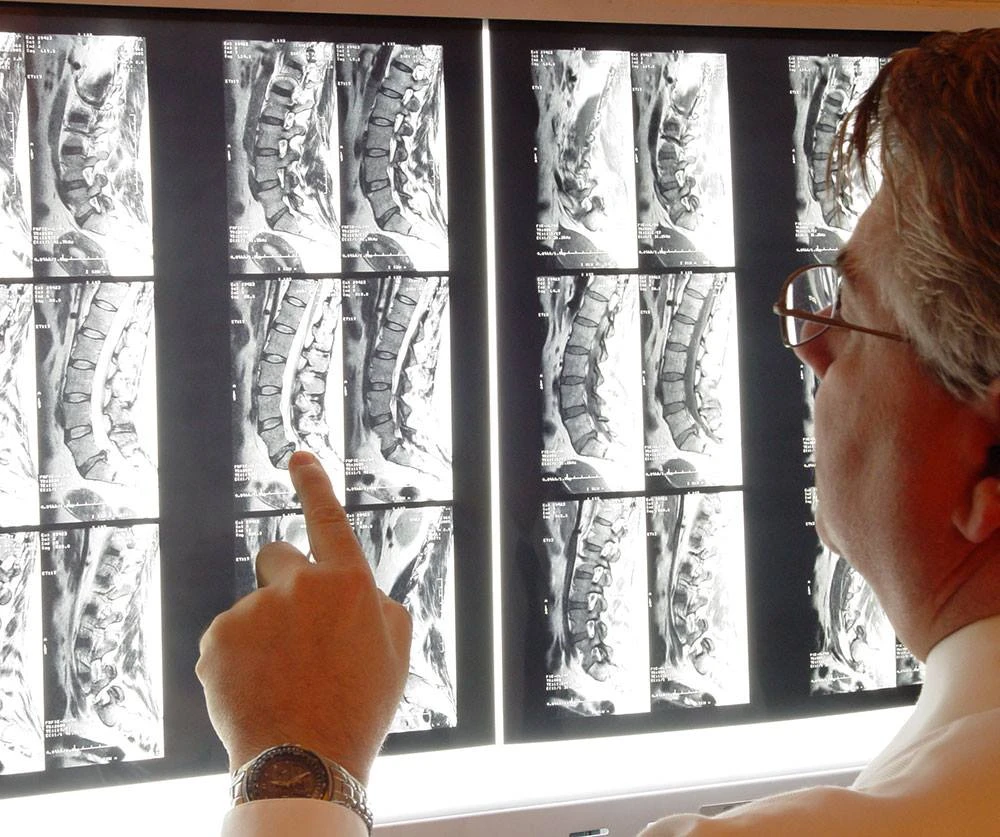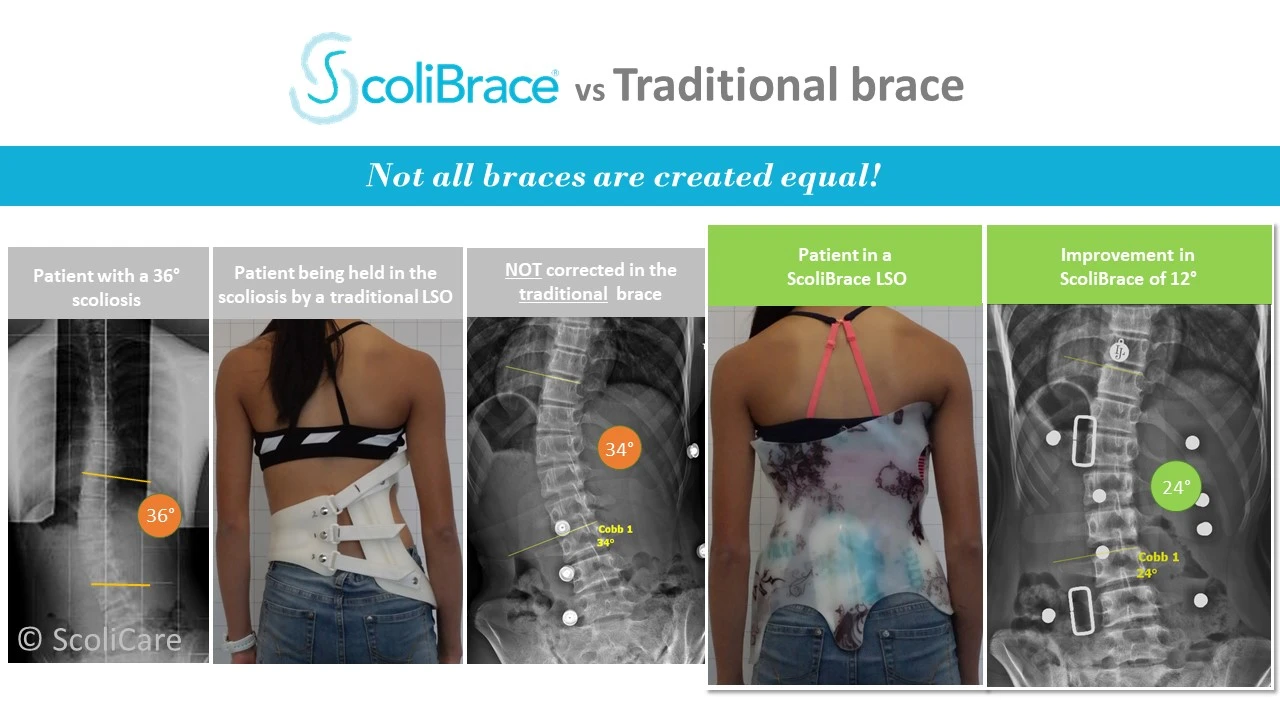Share This Story, Choose Your Platform!
Degree Of Severity Of Scoliosis | Mild, Moderate, Severe
Scoliosis is a spinal condition that can cause curvature of the spine. There are three degrees of severity for scoliosis: mild, moderate, and severe. Each one has its own unique set of symptoms and treatment options. This blog post will discuss the severity of scoliosis and the available treatments. Let’s get into it.
What Is Scoliosis?
Scoliosis is defined as an abnormal, sideways curvature of the spine. The spine typically has a natural S-shape when viewed from the side. When someone has scoliosis, their spine can take on a C- or even an S-shaped curve. This can occur in any part of the spine but most commonly affects the upper back.
While some curvature of the spine is considered normal, scoliosis involves excessive curving that results in visible deformities and health problems. The severity of scoliosis is classified based on the degree of spinal curvature present.
Understanding Cobb Angle Of Curvature
The Cobb angle is the most commonly used method to determine the degree of severity of scoliosis. It measures the angle formed by the intersection of two perpendicular lines, one drawn along the top of the spine and one along the bottom. The angle is then expressed in degrees.
Mild Scoliosis
Mild scoliosis is defined as having a spinal curve measuring between 10 and 25 degrees. This is typically only diagnosed if the curvature is progressive, meaning it is getting worse over time.
This degree of curvature is usually not noticeable and does not usually require treatment. In most cases, mild scoliosis will not worsen and will not cause any health problems. People with mild scoliosis often do not even know they have it unless discovered during a routine physical exam or X-ray. If the curve progresses to 30 degrees or more, treatment may be recommended to prevent the curve from getting worse.
Also, most people with mild scoliosis do not experience any symptoms or health problems due to their condition. However, mild scoliosis can lead to back pain or fatigue in some cases. People with mild scoliosis are monitored by their doctor to ensure that the curve does not progress to a more severe stage.
Moderate Scoliosis
Moderate scoliosis is defined as having a spinal curve measuring between 25 and 40 degrees. This degree of curvature is usually when symptoms first start to appear. In addition to back pain and fatigue, moderate scoliosis can also cause:
- Kyphosis, or excessive rounding of the upper back
- Lordosis, or an excessive arching of the lower back
- Muscle spasms
- Difficulty breathing
- Digestive problems
People with moderate scoliosis often require treatment to prevent the condition from worsening. Treatment options include:
- Physical therapy: This can help improve flexibility and muscle strength.
- Bracing: This is typically used for children and adolescents who are still growing. It helps to hold the spine in proper alignment and prevent further curvature.
- Scoliosis Surgery: In severe cases, surgery may be necessary to correct the spinal deformity.
Severe Scoliosis
This is the most serious type of scoliosis. The spine is severely curved and may look S- or C-shaped when viewed from the side. The ribs may stick out, and the shoulders may not be level. People with severe scoliosis often have back pain and fatigue. They may also have trouble breathing because their lungs cannot expand fully. In severe cases, the heart can be affected.
The spinal curve measures 41 degrees or more. This degree of curvature can cause significant deformities and health problems. In addition to the symptoms associated with moderate scoliosis, severe scoliosis can also cause:
- Displacement of the ribs
- The curvature of the pelvis
- Joint pain
- Cardiovascular problems
- Pulmonary (lung) problems
People with severe scoliosis usually require treatment to improve their quality of life and prevent further complications. Treatment options include:
Bracing: This is the most common treatment for children with scoliosis. A brace is a custom-made, hard plastic shell worn to prevent the curve from getting worse. The brace is usually worn for multiple hours a day and must be removed for bathing and exercise.
Surgery: This is usually recommended for people with severe scoliosis who are Done growing. Surgery involves inserting metal rods into the spine to straighten it.
After surgical treatment, the patient will likely need to wear a brace or have other treatments to keep the spine from curving again. Physical therapy may also be recommended to help improve your range of motion and strengthen your back muscles.
Complications of Untreated Severe Scoliosis
Untreated severe scoliosis can lead to several complications, some of which can be serious or even life-threatening. These complications include:
1. Breathing And Heart Problems
Scoliosis can cause the chest to become deformed, which can, in turn, lead to difficulty breathing and other respiratory problems. The heart may also be affected, as scoliosis can cause the chest to constrict the heart and lungs, making it difficult for the heart to pump blood properly. In severe cases, this can lead to heart failure.
2. Musculoskeletal Problems
Scoliosis can cause the spine to twist and deform, putting pressure on the spinal cord and nerves. This can lead to pain, numbness, weakness, and paralysis. It can also lead to deformities of the hips, ribs, and shoulders in severe cases.
3. Emotional Problems
The emotional effects of scoliosis can be significant. People with scoliosis often feel self-conscious about their appearance and may suffer from anxiety, depression, and low self-esteem.
4. Bad Posture Or Appearance
Scoliosis can cause the spine to curve excessively, leading to a hunched-over posture or an asymmetrical appearance.
5. Back Pain
Scoliosis can cause pain in the back and neck and fatigue, and muscle cramps. In severe cases, the pain can be disabling.
Untreated scoliosis can lead to several serious complications. If you think you or your child may have scoliosis, it is essential to see a doctor for an evaluation. Early diagnosis and treatment can help prevent or minimize these complications.
FAQs
1. How Is Scoliosis Treated?
The treatment of scoliosis depends on the severity of the condition. For mild scoliosis, treatment may not be necessary. For moderate or severe scoliosis, treatment may include:
- Bracing: A brace is worn to prevent the curvature from getting worse.
- Physical therapy: Physical therapy can help improve flexibility and strengthen the muscles around the spine.
- Surgery: Surgery may be recommended for severe scoliosis. The goal of surgery is to stop the progression of the curve and improve the spine’s appearance.
2. What Are The Different Types Of Scoliosis?
The main types of scoliosis are:
- Idiopathic scoliosis is the most common type of scoliosis, and the cause is unknown.
- Neuromuscular scoliosis: This type of scoliosis is caused by neurological conditions such as cerebral palsy or muscular dystrophy.
- Congenital scoliosis: This type of scoliosis is present at birth and is caused by abnormalities in the spine.
- Degenerative scoliosis: This is the most common type of adult scoliosis. It generally affects people over the age of 65 and is usually caused by the wearing down of the discs and joints in the spine, which can lead to a curvature of the spine.
3. What Are The Symptoms Of Scoliosis?
The most common symptom of scoliosis is a sideways curvature of the spine. The curve may be mild, moderate, or severe. Other symptoms of scoliosis include:
- One shoulder blade that appears more prominent than the other
- Clothes not fitting correctly due to unevenness in the waistline
- Unevenness in leg lengths
- Fatigue after physical activity
4. How Is Scoliosis Diagnosed?
A physical examination typically diagnoses scoliosis. Your doctor will look for signs of curvature in the spine and measure the curve’s degree. In some cases, X-rays may be used to confirm the diagnosis.
5. Can Scoliosis Be Prevented?
There is no known way to prevent scoliosis. However, early diagnosis and treatment can help prevent the condition from worsening.
6. What Is Adolescent Idiopathic Scoliosis?
Idiopathic scoliosis is a medical condition characterized by an abnormal spine curve. The word “idiopathic” means that the condition’s cause is unknown. Scoliosis can occur in people of any age, but it is most common in adolescents between 10 and 15 years old.
The cause of idiopathic scoliosis is unknown. However, there appears to be a genetic component, as the condition tends to run in families.
7. What Is Spinal Fusion Surgery?
Spinal fusion surgery is a procedure used to correct the curvature of the spine in patients with scoliosis. The surgery involves fusing two or more vertebrae, which prevents the spine from curving further. Spinal fusion surgery can be performed using various techniques, depending on the severity of scoliosis.
Summing Up
Mild, moderate, and severe scoliosis are all different levels of the condition. While they share some common symptoms and treatments, there are also crucial differences between them. If you or a loved one has been diagnosed with scoliosis, it is vital to seek medical attention and understand the treatment options.
#ScoliosisSeverity #MildScoliosis #ModerateScoliosis #SevereScoliosis #SpineDeformity #BackPainManagement #ScoliosisTreatment #OrthopedicSurgery #SpinalFusion #ScoliosisAwareness
How Is Scoliosis Diagnosed? An Ultimate Guide
How Is Scoliosis Diagnosed? An Ultimate Guide Scoliosis is a condition that affects the curvature of the spine. It can be caused by various ...
Should I go to a chiropractor after an accident?
Should I Go To A Chiropractor After An Accident? If you've been in a ...
Degree Of Severity Of Scoliosis | Mild, Moderate, Severe
Degree Of Severity Of Scoliosis | Mild, Moderate, Severe Scoliosis is a spinal condition that can cause curvature of the spine. There are three degrees of severity ...
Scoliosis Treatment In Adults | An Ultimate Guide
Scoliosis Treatment In Adults | An Ultimate Guide If you have been recently diagnosed with scoliosis or are a loved one of someone who ...
Scoliosis Side effects: What you need to know
Scoliosis Side Effects: What You Need to Know Scoliosis, a condition that causes a severe curvature of the spine, can be a complex condition to manage. But ...
How to fix a bulging disc on your neck?
How to fix a bulging disc on your neck? How to fix a bulging disc on your neck? If that's the question in your mind, you are at ...
Address
6216 S. Redwood Rd. Taylorsville, UT 84123
